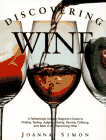Piemonte is Italy's westernmost region. It borders on Switzerland and France,
and is hemmed in by Alps and Apennines, which explains why Piemonte means "foot of the
mountain." The region's climate is rigid by Italian standards, with distinct changes of
season. Winters are cold with plenty of snow; summers are usually warm and dry; spring
and autumn are usually cool with fog normal at harvest time.
classifyng wines
There are two methods of classifying wines - by region, and by grape type.
In established areas, wines are strictly defined by where they're grown used to create
the wine, rather than solely the region itself.
| wine | grape |
| Asti Spumanti | muscat |
| Barolo | nebbiolo |
| Chianti | sangiovese, canaiolo, trebbiano, malvasia |
| Gavi | cortese |
|
Vineyards in Piemonte are located in two major areas; the Langhe and Monferrato hills
which are connected to the Apennines in the southeast and the foothills of the Alps to
the north between Lake Maggiore and Valle d'Aosta. The focal point of premium production
is the town of Alba on the Tanaro River. In the nearby Langhe hills Barolo
(king of wines and wine of kings) is produced at the rate of about 6 million bottles
a year and Barbaresco, which many experts rate its equal, rarely reaches half that.
Both come from Nebbiolo, which gives them the powerful structure that makes them
capable of improving for many years from fine vintages.
Piedmont is esteemed above all for its red wines, particularly Barolo and Barbaresco. The best known Piemontese wine is the white, sweet, bubbly and widely adored Asti Spumante.
Almost all of Piedmont's classified wines derive from native vines. Nebbiolo-source of Barolo, Barbaresco and Gattinara, which are all DOCG- Barbera ranks as the most popular vine for reds and Dolcetto is admired for its soft, full-flavoured wines. Freisa, Grignolino, Brachetto and a host of other varieties round out the honor roll of red wines.
White wines that come from this region are equally prominent. First comes Moscato d'Asti, the base of Asti Spumante. With an output surpassing 50 million liters annually, it ranks second in volume to Chianti among Italy's classified wines. An established star among dry whites is Gavi from the native Cortese grape.
The traditional Barolo and Barbaresco was often criticized as too elaborate for modern palates. The combination of a series of fine vintages and newly studied techniques among wine makers, many of them young, seems to be changing the old-fashioned image. Barolo and Barbaresco have retained their ample dimensions while becoming better balanced and more approachable than before. The Alba area is renowned for its smooth, supple Dolcetto under several appellations, and for first-rate Nebbiolo and white Ameis from the Roero hills, as well as table wines of class sometimes under the name Langhe.
The most surprising progress in both the Alba and Asti areas has been made with the ubiquitous Barbera, which after years of being considered common has rapidly become chic. Certain aged Barberas from choice plots around Asti and Albahave emerged to stand comparison with fine Nebbiolo reds.
Piedmontese drink more red wine than white, and about half of the red is Barbera, which can also be attractive in youthfully fruity and bubbly versions. Three other red wines that have recovered after decades of decline are the pale Grignolino, the often frizzante Freisa and the sweet and bubbly Brachetto from Acqui.
In the other major area of Nebbiolo production, the hills to the north, more modern styles are emerging in such reds as Ghemme, Carema, Lessona, Sizzano, Fara and the long vaunted Gattinara, which has become DOCG.
Piedmont ranks with Italy's leading producers of sparkling wines. Foremost among them is Asti Spumante, the world's most popular sweet sparkling wine. The market for this fragrant white is actually larger abroad than in Italy. In fact, worldwide demand is so great that a shortage of Moscato di Canelli grapes has developed. The region is also a major producer of dry sparkling wines by both the classical and charmat methods, though only rarely do the Pinot and Chardonnay grapes originate in the region. Most come from the neighbouring Oltrepo Pavese in Lombardy or from Trentino Alto-Adige.
Among still whites, Gavi has emerged as one of Italy's most coveted, with a crisp, lively style. Admirers consider it one of the best with seafood. Ameis continues to gain ground in Roero, where the light, zesty Favorita is also beginning to emerge. Some predict a revival of the ancient white Erbaluce di Caluso from near Turin. Although Piedmontese growers were among the first to experiment with such outside varieties as Cabernet and the Pinots early in the 19th century, these vines largely faded from favour. Just recently, though, Cabernet Sauvignon, the Pinots and especially Chardonnay have shown unusual promise as table wines. But admirers have noted that, despite their vines' universal status, the wines bear a stamp that is unmistakably Piedmontese.
Piemonte ranks seventh among the regions in total production; however, it is a giant of wine. It has the most DOC- DOCG zones with 38 (taking in 43 distinct types of wine) and the most vineyards dedicated to classified production. For craftsmanship, respect for tradition and devotion to native vines in their historical habitat, the Piedmontese have no rivals in Italy.





